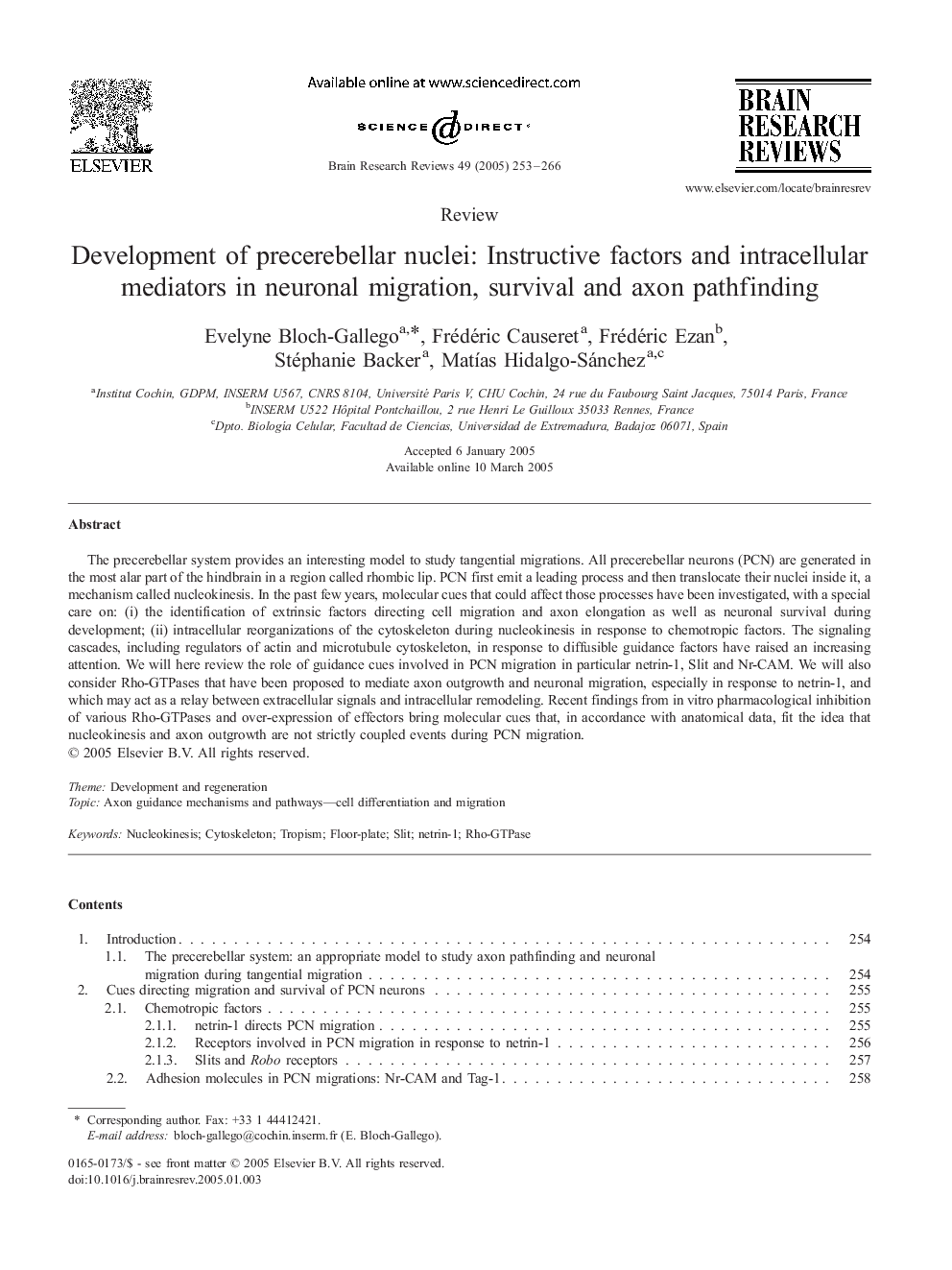| Article ID | Journal | Published Year | Pages | File Type |
|---|---|---|---|---|
| 9423081 | Brain Research Reviews | 2005 | 14 Pages |
Abstract
The precerebellar system provides an interesting model to study tangential migrations. All precerebellar neurons (PCN) are generated in the most alar part of the hindbrain in a region called rhombic lip. PCN first emit a leading process and then translocate their nuclei inside it, a mechanism called nucleokinesis. In the past few years, molecular cues that could affect those processes have been investigated, with a special care on: (i) the identification of extrinsic factors directing cell migration and axon elongation as well as neuronal survival during development; (ii) intracellular reorganizations of the cytoskeleton during nucleokinesis in response to chemotropic factors. The signaling cascades, including regulators of actin and microtubule cytoskeleton, in response to diffusible guidance factors have raised an increasing attention. We will here review the role of guidance cues involved in PCN migration in particular netrin-1, Slit and Nr-CAM. We will also consider Rho-GTPases that have been proposed to mediate axon outgrowth and neuronal migration, especially in response to netrin-1, and which may act as a relay between extracellular signals and intracellular remodeling. Recent findings from in vitro pharmacological inhibition of various Rho-GTPases and over-expression of effectors bring molecular cues that, in accordance with anatomical data, fit the idea that nucleokinesis and axon outgrowth are not strictly coupled events during PCN migration.
Related Topics
Life Sciences
Neuroscience
Neuroscience (General)
Authors
Evelyne Bloch-Gallego, Frédéric Causeret, Frédéric Ezan, Stéphanie Backer, MatÃas Hidalgo-Sánchez,
